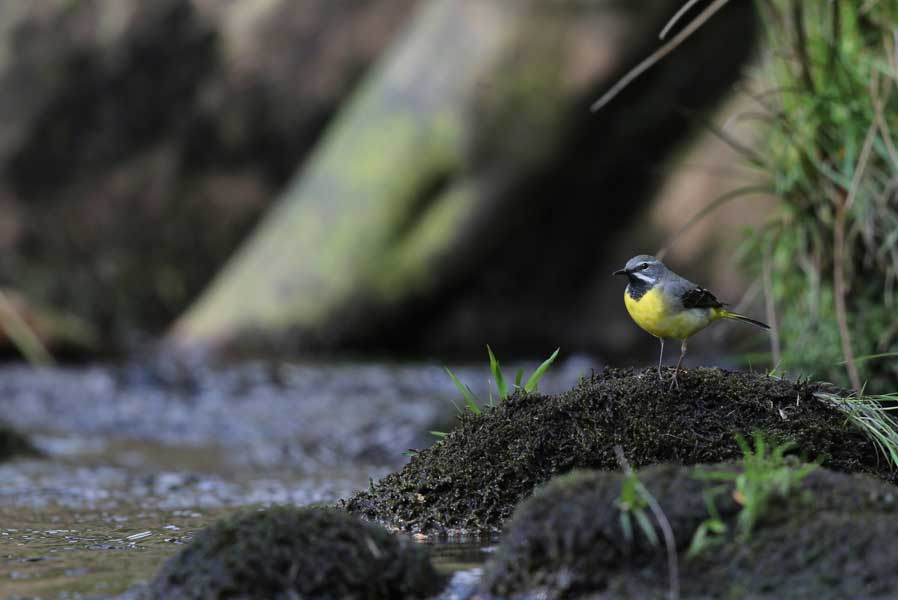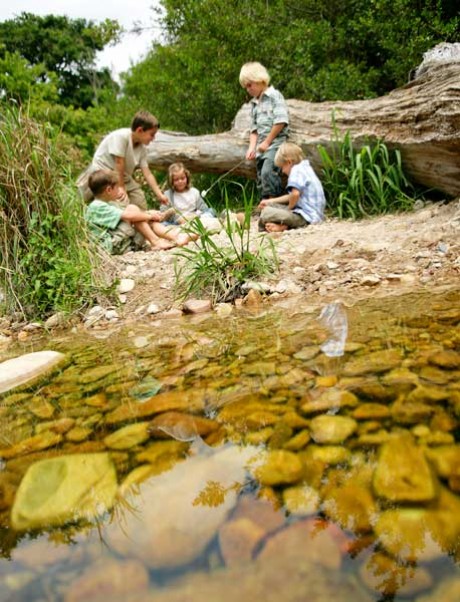A Riparian What?
If you own or manage land next to a stream, it benefits all of us to protect that water with a buffer.
By Amy NeyA "riparian buffer" sounds complex, but it is really quite simple: a strip of vegetation along a streambank. Riparian is from a Latin term that refers to the land along the edge of a natural waterway.
In 1911, President William Howard Taft signed the Weeks Act, giving the federal government authority to purchase private lands for conservation purposes, especially to protect the headwaters of rivers and watersheds in the eastern U.S. Today, we may not see the need for such protection, but in the early 1900s, land use restrictions were nonexistent — land was being cleared at an alarming rate leaving no vegetation to hold soil in place. In 1916, the Pisgah National Forest in North Carolina was the first national forest created under the umbrella of the Weeks Act.
Thus, the first step was taken to protect our water resources. But the second step is up to the rest of us. You can make a riparian buffer of native vegetation including grasses, flowers, bushes and trees along a streambank. The suggested width of a buffer ranges from 20 to 100 feet, depending on the slope of the land and the land use.
Why are buffers important?
Sediment is the number one pollutant of our waterways, and it has numerous causes. Streambank erosion occurs when there is not enough vegetation to hold the soil in place, when grazing cattle are allowed access to streams, and at improper stream crossings at farm and forestry sites. A vegetated buffer really helps to reduce sedimentation and keep our water pure, by intercepting heavy rains and protecting the soil with leaf cover, and by holding streambank soil in place with the root systems of plants and trees.

Migratory songbirds depend on buffers to rest during their travels. Streamside buffers that protect animal habitat also benefit hunters and birdwatchers.
Buffers also protect animal habitat. Deer, rabbits, quail and other species use these zones to safely drink, feed and travel from place to place. Migratory songbirds also depend on buffers to rest during their travels. Streamside buffers that protect animal habitat also benefit hunters and birdwatchers.
Streambank trees help keep the water shaded, cool and oxygenated. These conditions promote healthy populations of aquatic invertebrates that support fish, other aquatic wildlife, and the animals that depend on them for food. Vegetation along streams provides food, shelter and shade for aquatic habitats that form the base of our food chain.
Vegetated buffers also help filter pollutants from runoff before it reaches a stream or river. They prevent pesticides, fertilizer and other chemicals from entering moving water by filtering or absorbing them. They also filter sediment out of floodwaters and slow the water, helping to reduce the damage done during flooding.
What you can do
If you have ditches, protect the banks with vegetation, not rip-rap. Rocks don't have roots to hold the soil in place, so it will wash out from underneath and create a larger problem.
If you have a stream, maintain a buffer of native plants and trees along the bank. Seeing the stream is okay, as long as native vegetation is maintained and the banks are not lined with rip-rap.
If you own cattle, fence them out of moving water and provide an alternate water source.
Refrain from straightening a section of stream, as it will likely return to its original state and cause erosion in the process.
To find free resources and advice on how to plant or maintain a buffer, and possibly cost-share programs to help pay for projects, contact your local Cooperative Extension office, Soil & Water Conservation District office, or Natural Resources Conservation Service district conservationist.
-
Share this story:


